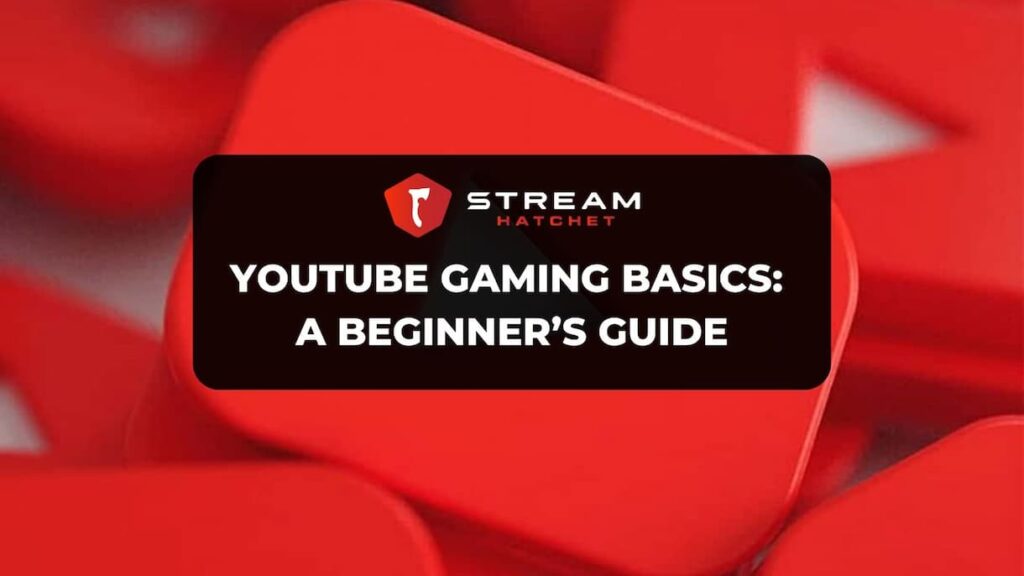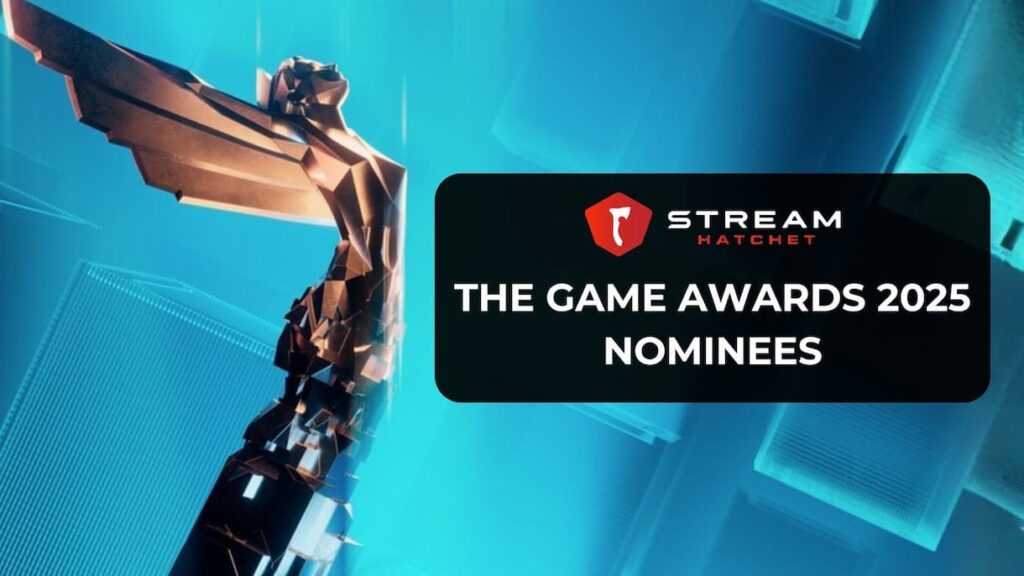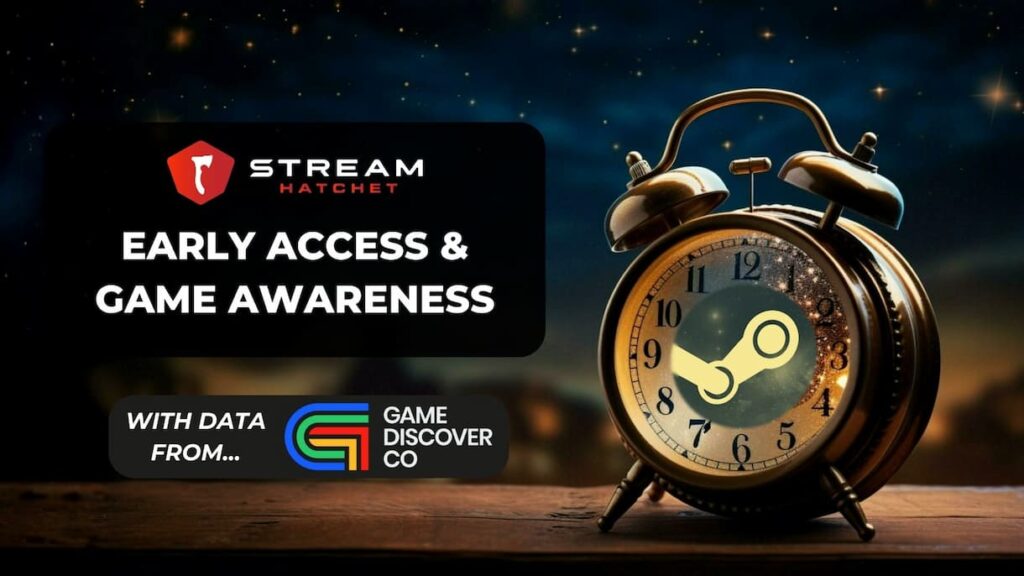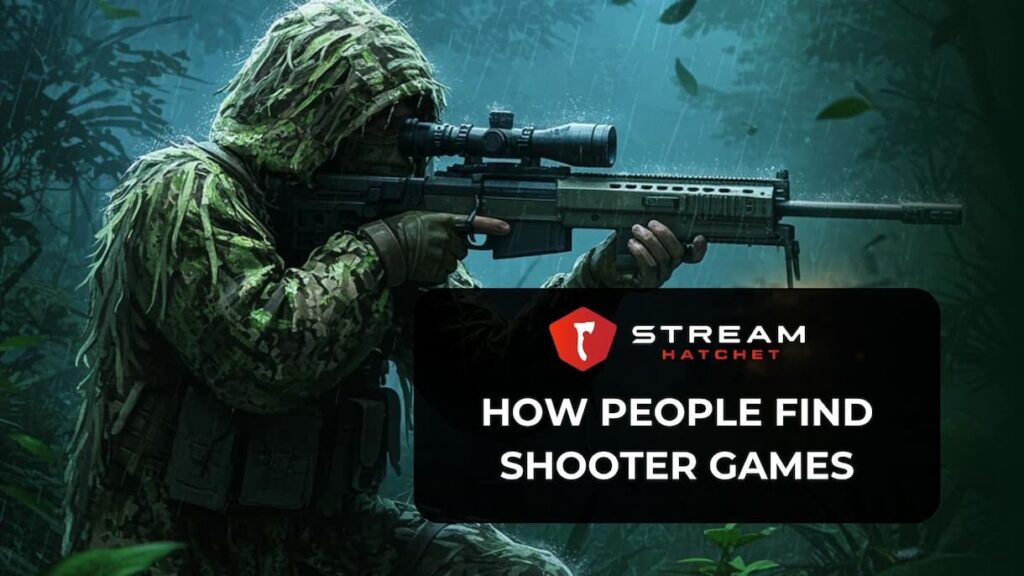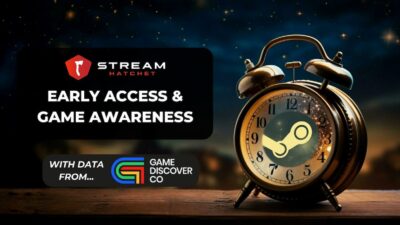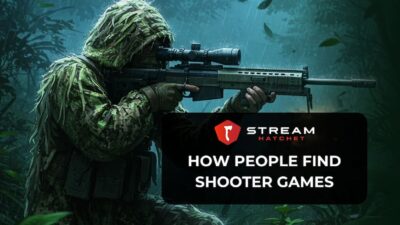For new entrants to the live-streaming arena, the sheer mass of information can be overwhelming. Platforms, streamers, gaming titles, variety content – with so many interesting trends emerging, evolving, and fading at the lightspeed rate of online discourse, it can be hard to separate out what’s important. To help you demystify this industry, we’re covering the basics of Google’s own live-streaming platform: YouTube Gaming.
What is YouTube Gaming exactly? YouTube Gaming is the gaming-specific section of YouTube, featuring an array of content aimed at gamers from trailers to Let’s Plays to tutorials. In particular, the live-streaming aspect of YouTube Gaming has made it particularly attractive for people who want to access a more family-friendly audience than that found on Twitch (you can read about the basics of Twitch here). Through their bonds with YouTube Gaming streamers, viewers decide what games they should play, what products they should buy and what hobbies they should adopt.
As such, advertising your product on YouTube Gaming is a fantastic way of reaching a mass, devoted audience. Understanding the platform means understanding how best to reach that audience.
Five Crucial Points to Understand About YouTube Gaming:
- YouTube Gaming’s Founding and Evolution
- YouTube Gaming’s Business Model
- YouTube Gaming’s Relationship with Streamers
- YouTube Gaming-specific Campaigns and Promotions
- The Current State of YouTube Gaming
One of the most powerful tools at your disposal is information: Access Stream Hatchet’s in-depth repository of streaming data to see chat mentions on Twitch and current trends among popular streamers.
How YouTube Gaming Was Founded and its Evolution
YouTube itself was launched in 2005 by three ex-PayPal employees, quickly becoming the most popular video-sharing platform and being snapped up by Google just a year later in 2006. While video subgenres like cat videos and DIY tutorials evolved on the platform, one community saw an explosion in popularity: Gaming. As screen capture and voice recording technology rapidly developed, early content creators realized they could turn their passion for video games into entertainment. BlameTruth’s early Call of Duty 4 commentaries provided tips and tricks to players, and later channels built on this foundation with full playthroughs of games’ campaign modes (affectionately referred to as “Let’s Plays”). By 2010, creator collectives like Yogscast and gamers with face cams like PewDiePie were pumping out gaming-exclusive content and racking up views.
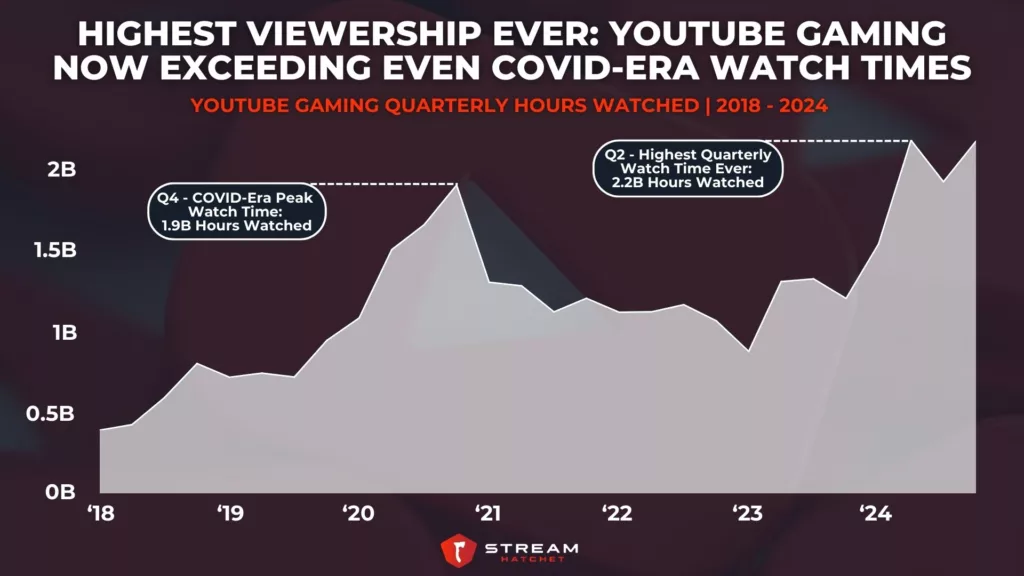
Around the same time, Twitch was gaining traction and proving that non-edited, fully streamed playthroughs of games were also able to garner attention online. Although YouTube had been hosting live-streamed events since 2008, Google decided to promote its ability to compete against Amazon’s Twitch in the live-streaming gaming sphere by launching a new service in 2015: YouTube Gaming. This new front-end version of YouTube for desktop and mobile separated out gaming content from news and IRL content, making it easier to locate. This split caused some confusion among users and, with dwindling app downloads, Google made the choice to integrate YouTube Gaming back into the original platform as a gaming-exclusive vertical in 2019 (still called YouTube Gaming).
Live-streaming content has been integral to the health of YouTube Gaming ever since, continuing to grow in popularity. In 2024, YouTube Gaming live-streaming hit its highest ever quarterly watch time of 2.2B hours watched – even higher than the COVID-era quarterly viewership of 1.9B. YouTube Gaming live-streaming is even nearing Twitch’s watch times for the same periods. Note that this watch time only accounts for gaming content: YouTube Non-gaming live-streaming watch times are typically 5-6x higher over equivalent periods (largely thanks to news channels like Al Jazeera and NBC).
YouTube Gaming’s Business Model
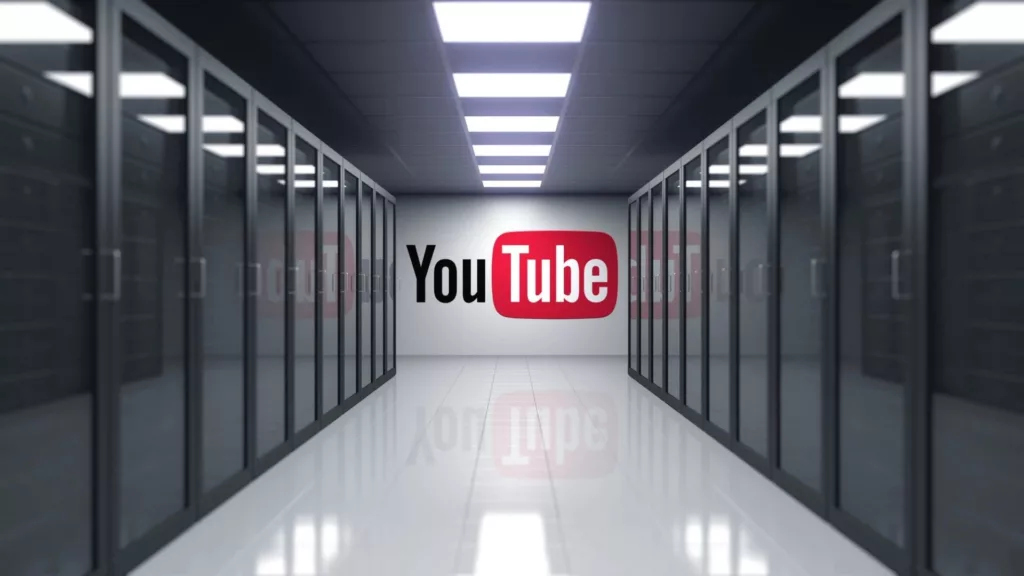
YouTube Gaming’s business model is largely the same as the greater YouTube platform, mostly relying on ad revenue from videos. In that sense, maximising watch time and viewership are crucial to the platform’s success, and the recommendation algorithm has frequently changed over the years to increase these metrics. This has caused some controversy in the past, such as the deprioritization of short-form animated content that put many YouTube animators out of a job. There’s also an ad-free version of YouTube (YouTube Premium) which users can pay a monthly cost of $13.99 USD for (as of the time of writing) – this mirrors similar options for online apps like Spotify Premium. YouTube may also partner with particular businesses to provide exposure for their events, though this is less common than with Twitch (which regularly partners with esports organizers etc.).
YouTube Gaming in particular relies upon its status as a community-bonding platform that links gamers, content creators, and gaming companies together. Gaming companies increase exposure for their upcoming game launches and updates through tutorials and update promos, while content creators express their gaming skills or vibrant personalities through playthroughs. The most powerful interactions see gaming publishers sponsoring creators’ content to reach new audiences and, hopefully, new players. And, naturally, gamers act as the consumers for this content, seeking out helpful tutorials, exciting trailers, and novel gaming-centric experiences.
YouTube Gaming’s Relationship with Streamers
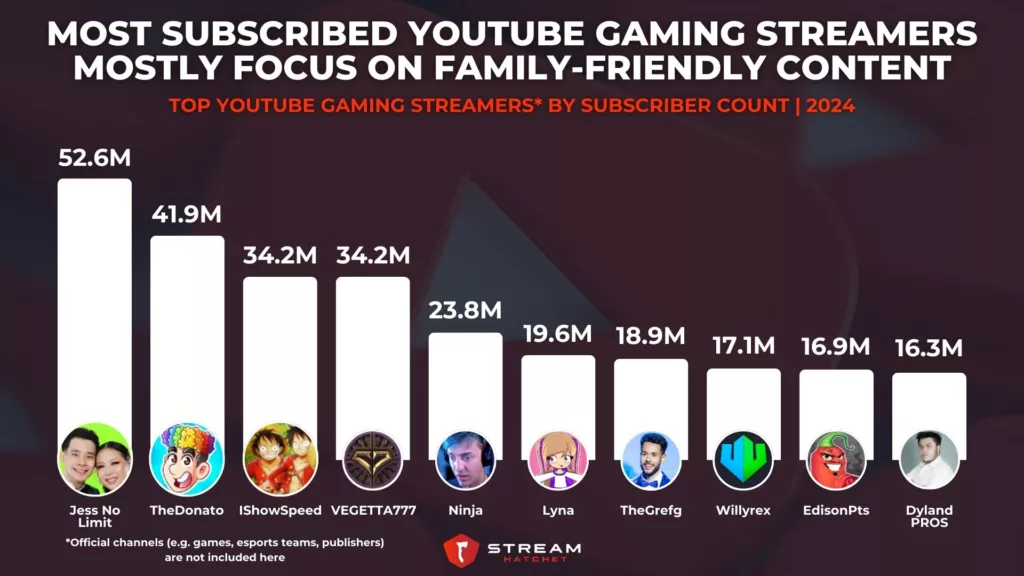
While YouTube Gaming hosts a variety of video content (see below), live streaming remains an integral component of its community. Streamers provide the highest video duration:production effort ratio of any video format, which means more easily attained watch times. The most subscribed YouTube Gaming streamers reflect this, with household names like Ninja and IShowSpeed finding their audiences on the platform. YouTube Gaming also reaches more non-Western viewers than its main competitor Twitch, with the most subscribed YouTube Gaming streamer being Indonesian esports player Jess No Limit (with 52.6M subscribers).
Part of what makes YouTube Gaming so attractive to professional streamers is its transparency regarding streaming stats. YouTube provides detailed analytics so that creators can go in-depth on their performance, nurturing a culture of hardcore data analysis and refinement not seen on Twitch. This also includes full control of monetization through Google Ads, such as the ability to add/exclude mid-roll ads and alter the frequency of ads. Streamers also have other routes for monetization, such as channel-specific membership fees (as opposed to YouTube Premium which covers the entire site) and Super Chat/Super Thanks which are paid messages that viewers can send to show their support (similar to Twitch’s Cheer chat function).
YouTube Gaming-specific Campaigns and Promotions
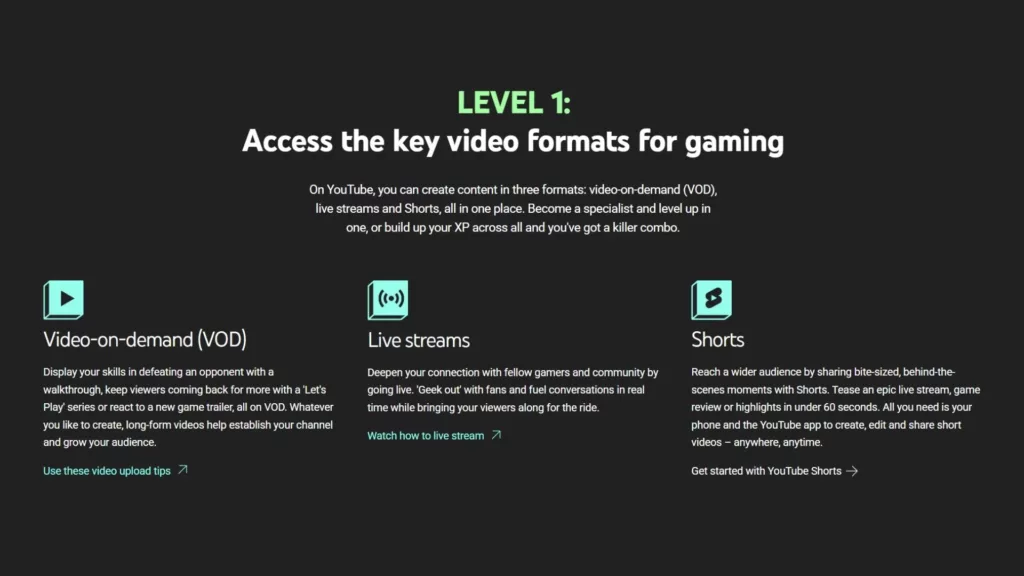
As mentioned earlier, YouTube Gaming has a unique advantage over Twitch: It’s not just a live streaming site. Creators on YouTube Gaming can supplement their live-streaming content with VODs (for edited content) and Shorts (for highlight reels and short-form content). A common workflow for YouTube Gaming Creators is to create live streams, then edit this content into multiple formats to get the most bang for their buck. Furthermore, YouTube’s ability to create playlists means that this content can reach viewers who discover the channel at a later date, become fans, and then want to rewatch old content all located in one convenient place.
Apart from this flexibility, YouTube Gaming does also offer a host of other services that help to bond online communities together. The Communities tab itself, for example, acts as a forum for a channel’s fans where they can post their recent thoughts or pose questions to their favourite streamer. For a more active example, streamers can set Premiere dates for notable events, like big collaborations or virtual concerts, to create anticipation among their fan base. Finally, YouTube Gaming has pages dedicated to specific video games such as Mobile Legends: Bang Bang and Marvel Rivals, making it easier for fans of these games to find relevant (and hopefully new) content creators in the space.
The Current State of YouTube Gaming
For any curious parties, we provide a live rankings page for YouTube Gaming streamers by various metrics which you can check out here. The below notes are more generalized comments applicable at the time of writing.
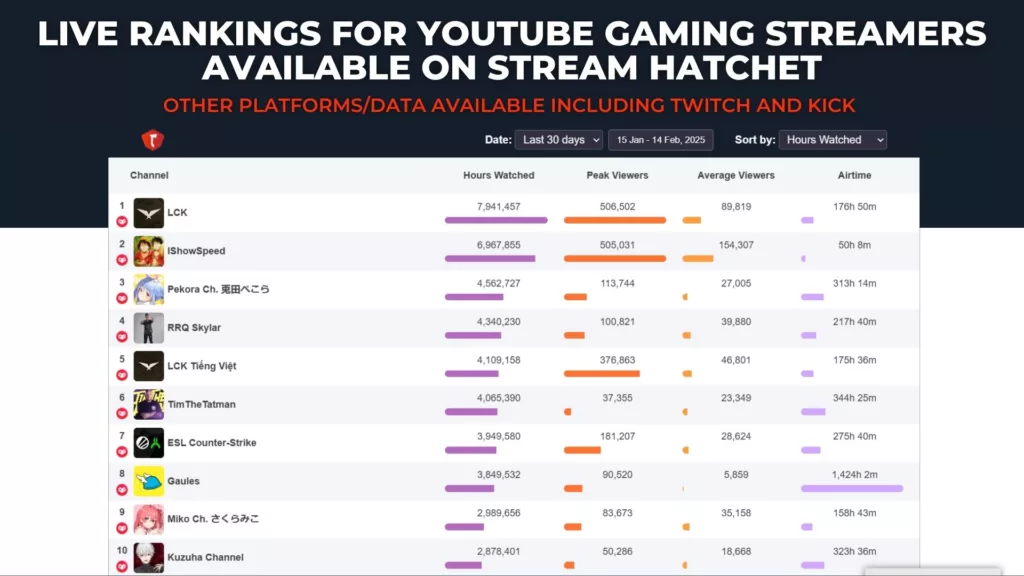
Although detailed user data isn’t available for YouTube Gaming specifically, the entire YouTube platform has 122M active users daily with 1B hours worth of content being watched per day. With regards to YouTube Gaming specifically, the majority of this watch time comes from mobile games such as MOBA Mobile Legends: Bang Bang and Battle Royale Garena Free Fire. This preference for mobile titles matches the more global demographic reached by YouTube Gaming, with mobile games typically being more popular in South East Asia and South America. Compare this to Twitch where PC games in the same genres perform better, like League of Legends and Fortnite. While YouTube Gaming isn’t as well known for its esports scene compared to Twitch, the players who do succeed there again primarily focus on mobile esports titles.
On the topic of popular streamers, a few types of channels tend to more easily find success on YouTube Gaming as opposed to Twitch. For example, almost all of the most popular VTubers host their channels on YouTube Gaming, padding out time between virtual concerts with playthroughs of games. Given that most VTubers were historically Japanese, and that Japan’s options for video hosting were either YouTube or Niconico, it makes sense that they would veer away from Twitch. As VTuber culture developed, English-speaking VTubers too found their fans on YouTube.
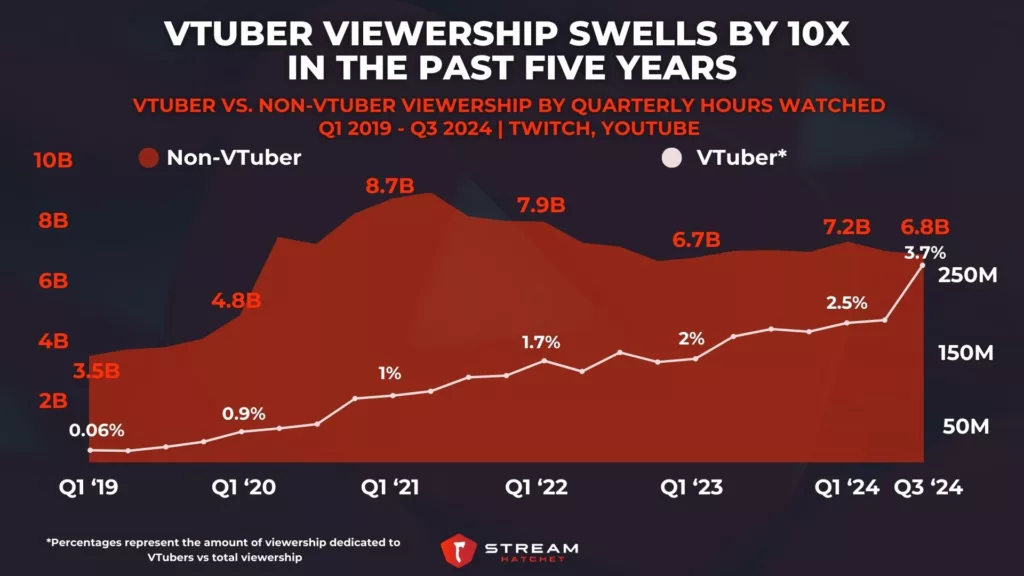
Another subsection of streamers pushed away from Twitch are those creating content for younger fans. Twitch has an age restriction of 13 years old, so streamers creating family-friendly content tend to gravitate towards YouTube Gaming instead. Certain games lend themselves to this style of content, most notably Minecraft and Nintendo games. Taking all of these trends together, then, YouTube Gaming’s largest audience demographics are younger, more global players.
Given YouTube’s age, many of the most popular channels greatly differ from the early days of the platform. Successful channels now have much higher production values and entire production teams with historical followings (e.g. Game Grumps) which clearly delineates them from early Let’s Plays. YouTube is actively taking steps to break free from these ruts, however. For example, YouTube (and Google more broadly) are offering AI-enabled services for enhancing one’s own content, and changing the way content is discovered using AI. As the algorithm changes thanks to AI, finding the right streamers for influencer marketing campaigns will require even more expertise.
_
_
This is far from every detail one should know about YouTube Gaming, but the information provided herein is a fantastic starting point for anyone looking to do deeper reading into the topic. Before beginning your first foray into advertising on YouTube Gaming, we strongly suggest doing further reading on YouTube’s official blog and, of course, playing around with the site yourself. Of course, it can help to have a guiding hand when entering the live-streaming arena. For personalized advice, reach out to us at Stream Hatchet.
Stream Hatchet provides the data needed to navigate the YouTube Gaming landscape:
- Learn which streamers are playing which games to better target your campaigns
- Gain insights into your viewership data to better negotiate with streamers and sponsors
- Explore the effectiveness of your social media campaigns to better understand what marketing strategies are reaching your audience
- Track the performance of esports events and gain insight into the audience demographics for specific tournaments
To get the edge in the streaming arena, sign up to Stream Hatchet now and a sales representative will be in touch to design your personalized demo:
